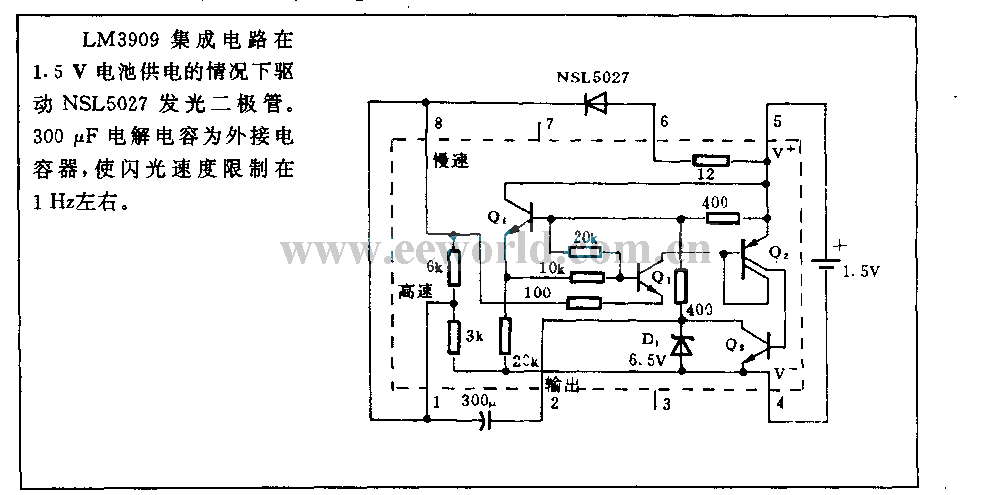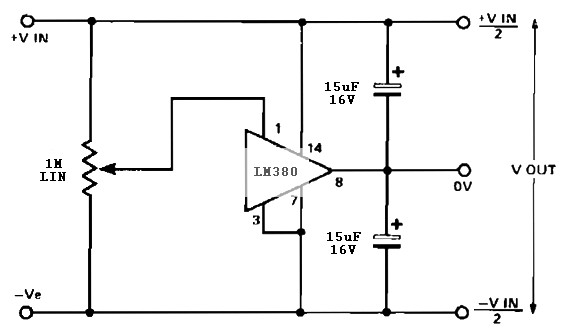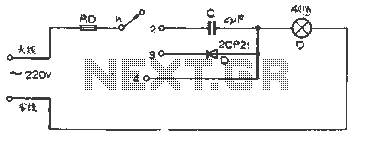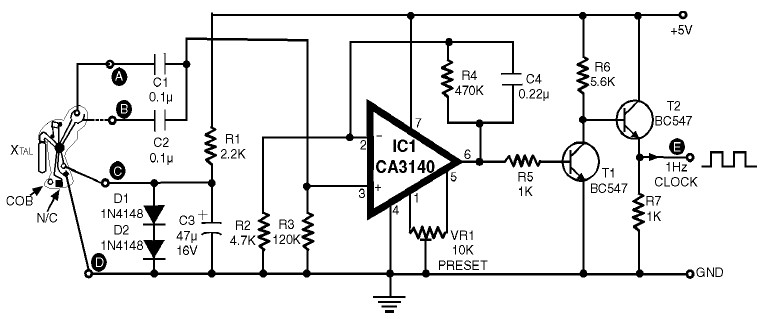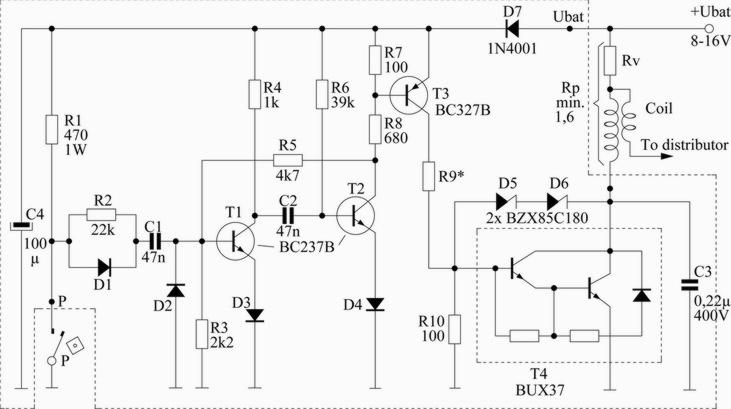
Simple Short Finder Circuit

Transistors Q1 and Q2, along with resistors R1 through R7, form the input balancing stage that measures the resistance between points X and Y. This stage operates as a bridge circuit, incorporating resistors R1, R2, R6, R7, and the resistance between points X and Y. Transistors Q3 and Q4, along with their associated passive components, create a buzzer that activates when the tester identifies a short circuit. The buzzer's operation is governed by the output from Q2. When the input resistance exceeds approximately 10 ohms, Q2 activates, resulting in its collector potential being near ground level, which keeps the buzzer off. Conversely, when the input resistance drops below a certain threshold, Q2 deactivates, triggering the buzzer to sound. The frequency of the sound produced, approximately 1000 Hz, can be modified by changing the value of capacitor C.
The circuit employs a differential input configuration using transistors Q1 and Q2 to achieve precise balancing and measurement of the resistance between points X and Y. This configuration ensures that any changes in resistance can be accurately detected, allowing the circuit to function effectively as a short circuit tester. The bridge circuit is carefully designed with resistors R1, R2, R6, and R7 to provide a stable reference for the input stage.
Transistors Q3 and Q4 serve as the switching elements for the buzzer, which is a critical component in providing audible feedback to the user. The operation of Q2 is central to the circuit's functionality; when the input resistance is high, Q2 remains in an active state, maintaining a low output, which prevents the buzzer from sounding. This condition indicates that there is no short circuit present. However, once the resistance falls below the defined threshold, Q2 switches off, leading to a high output that activates the buzzer, alerting the user to the presence of a short circuit.
The adjustable frequency of the buzzer, set at approximately 1000 Hz, can be fine-tuned by altering the capacitance of capacitor C, providing flexibility in the circuit's auditory feedback. This feature can be particularly useful in applications where different sounds may be required to indicate various conditions or thresholds. Overall, this circuit design effectively combines analog components to create a reliable short circuit detection system with user-friendly feedback mechanisms. Transistors Ql and Q2, together with resistors Rl through R7, make up the input balancing stage, which senses the resistance between points X and Y. The input stage is essentially a bridge, consisting of Rl, R2, R6, R7, and the resistance between points X and Y.
Transistors Q3 and Q4 and their associated passive components form a buzzer, which sounds when the tester detects a short. The buzzer is controlled by the output from Q2. When the input resistance is high (more than about 10 ), Q2 turns on, so its collector potential is close to ground, and the buzzer remains off.
When the input resistance is sufficiently low, Q2 turns off, and the buzzer sounds. The frequency of the sound, which is about 1000 Hz, can be adjusted by varying the value of capacitor (C).
The circuit employs a differential input configuration using transistors Q1 and Q2 to achieve precise balancing and measurement of the resistance between points X and Y. This configuration ensures that any changes in resistance can be accurately detected, allowing the circuit to function effectively as a short circuit tester. The bridge circuit is carefully designed with resistors R1, R2, R6, and R7 to provide a stable reference for the input stage.
Transistors Q3 and Q4 serve as the switching elements for the buzzer, which is a critical component in providing audible feedback to the user. The operation of Q2 is central to the circuit's functionality; when the input resistance is high, Q2 remains in an active state, maintaining a low output, which prevents the buzzer from sounding. This condition indicates that there is no short circuit present. However, once the resistance falls below the defined threshold, Q2 switches off, leading to a high output that activates the buzzer, alerting the user to the presence of a short circuit.
The adjustable frequency of the buzzer, set at approximately 1000 Hz, can be fine-tuned by altering the capacitance of capacitor C, providing flexibility in the circuit's auditory feedback. This feature can be particularly useful in applications where different sounds may be required to indicate various conditions or thresholds. Overall, this circuit design effectively combines analog components to create a reliable short circuit detection system with user-friendly feedback mechanisms. Transistors Ql and Q2, together with resistors Rl through R7, make up the input balancing stage, which senses the resistance between points X and Y. The input stage is essentially a bridge, consisting of Rl, R2, R6, R7, and the resistance between points X and Y.
Transistors Q3 and Q4 and their associated passive components form a buzzer, which sounds when the tester detects a short. The buzzer is controlled by the output from Q2. When the input resistance is high (more than about 10 ), Q2 turns on, so its collector potential is close to ground, and the buzzer remains off.
When the input resistance is sufficiently low, Q2 turns off, and the buzzer sounds. The frequency of the sound, which is about 1000 Hz, can be adjusted by varying the value of capacitor (C).
